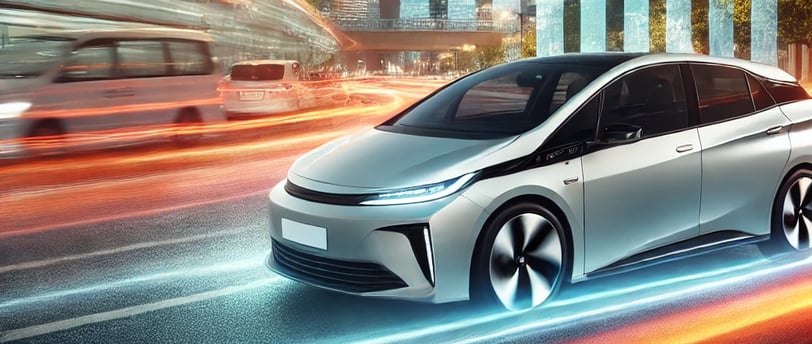The Hybrid Comeback: Will They Be More in Demand Than Expected?
E-MOBILITY
Karthik Javanappa
1/14/20253 min read


The electric vehicle (EV) revolution has long been hailed as the future of transportation, with governments, automakers, and consumers rallying behind a cleaner, greener future. However, recent market trends suggest that hybrid vehicles—once seen as a transitional technology—are making an unexpected comeback. As a strategy consultant in the e-mobility sector, it’s essential to evaluate whether hybrids will surpass expectations and what this means for the EV industry.
Why Hybrids Are Gaining Traction
Affordability and Accessibility
High EV prices and fading subsidies have made hybrids an attractive alternative for cost-conscious consumers. In Europe, for example, hybrid electric vehicles (HEVs) were 11% cheaper than gasoline cars and 27% cheaper than EVs on average in early 2024. This affordability is driving demand, especially in markets where subsidies for EVs are tapering off.Range Anxiety and Infrastructure Challenges
One of the biggest hurdles for EV adoption remains "range anxiety"—the fear of running out of charge before reaching a station. Hybrids eliminate this concern by combining internal combustion engines (ICE) with electric motors, offering extended range without reliance on charging infrastructure. This makes hybrids particularly appealing in regions with underdeveloped charging networks.Economic Uncertainty
Persistent inflation and high-interest rates have made consumers more cautious about large purchases like EVs. Hybrids, which are perceived as reliable and cost-effective, have become a more pragmatic choice for buyers navigating uncertain economic conditions.Regulatory Push
Governments worldwide are tightening emissions regulations, but not all are mandating full electrification immediately. Hybrids offer a middle ground by reducing emissions without requiring a complete shift to battery-electric vehicles (BEVs). For instance, Asia-Pacific governments are incentivizing hybrid adoption through tax breaks and reduced registration fees.
Market Data: The Resurgence of Hybrids
The global high-voltage hybrid vehicle market is projected to grow from $260.23 billion in 2025 to $1,352.23 billion by 2034 at an impressive CAGR of 20.15%.
In Europe, HEV registrations surged by 18% in Q1 2024 compared to the previous year, while EV sales grew by just 3.8% during the same period.
In the U.S., hybrids are outperforming EVs in affordability and practicality, with models like the Toyota Prius regaining popularity among consumers hesitant to transition fully to EVs.
Strategic Implications for the E-Mobility Industry
Reevaluating Product Portfolios
Automakers need to strike a balance between investing in BEVs and expanding their hybrid offerings. Companies like Ford and Hyundai are already doubling down on hybrids as part of their electrification strategies.Localized Strategies
Regional differences in consumer behavior and infrastructure development call for tailored approaches:In Europe, where subsidies are fading, hybrids can serve as an affordable eco-friendly option.
In Asia-Pacific, hybrids are becoming status symbols for a growing middle class concerned about sustainability.
In North America, hybrids address range anxiety while remaining cost-competitive.
Technology Investments
Advancements in battery technology and power electronics are making hybrids more efficient and appealing. Automakers should focus on improving fuel economy and integrating features like Advanced Driver Assistance Systems (ADAS) to enhance consumer value.Bridging the Gap
Hybrids can serve as a stepping stone to full electrification by familiarizing consumers with electric powertrains while addressing their concerns about cost and convenience.
Will Hybrids Outpace Expectations?
While BEVs remain central to long-term decarbonization goals, hybrids are proving to be a vital part of the transition phase. They offer an immediate solution to consumer concerns about affordability, range anxiety, and infrastructure limitations. As market dynamics evolve, hybrids may play a larger role than anticipated in shaping the future of e-mobility.For automakers and stakeholders in the EV ecosystem, embracing this trend could unlock new opportunities while ensuring a smoother transition toward full electrification. The key is adaptability—understanding regional nuances and aligning strategies with consumer preferences will be critical for success in this rapidly changing landscape.
Final Thoughts
The resurgence of hybrids highlights that the path to electrification is not linear but multifaceted. As we navigate this complex journey, hybrids could very well bridge the gap between traditional ICE vehicles and fully electric ones—offering both environmental benefits and practical solutions for today's challenges.
